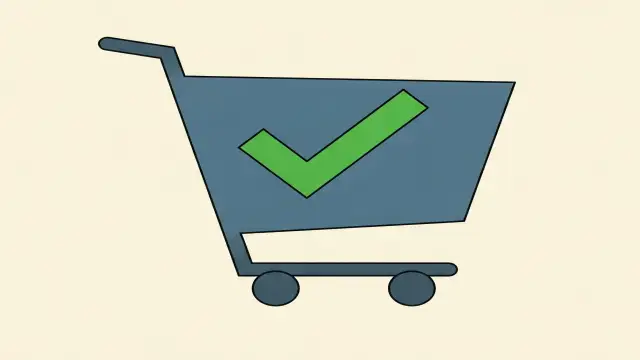How I Cut My Grocery Bill by 80%: Simple Money-Saving Tips
Let’s face it: groceries are expensive. Every trip to the store seems to cost more than the last. But what if I told you it’s possible to slash your grocery bill—by 80%? Sounds too good to be true, right? Well, I did it, and you can too. Here’s how.
The Problem: My Grocery Bill Was Out of Control
A few years ago, I realized I was spending way too much on groceries. I’d walk into the store with a list, but somehow, I’d always leave with a cart full of stuff I didn’t need. Sound familiar?
I knew I had to make a change. So, I set a goal: cut my grocery bill by 80%. It wasn’t easy, but with some planning and discipline, I made it happen. Here’s how.
Step 1: Track Your Spending
The first step to saving money is knowing where it’s going. I started by tracking every dollar I spent on groceries.
Here’s what I did:
- Keep Receipts: I saved every receipt and logged the amounts in a spreadsheet.
- Categorize Expenses: I broke down my spending into categories like produce, meat, and snacks.
- Identify Waste: I quickly realized how much I was spending on impulse buys and unused food.
Step 2: Plan Your Meals
Meal planning was a game-changer. Instead of wandering the aisles aimlessly, I started shopping with a purpose.
Here’s how I did it:
- Create a Weekly Menu: I planned every meal for the week, including snacks.
- Stick to a List: I made a detailed shopping list and stuck to it.
- Cook in Bulk: I prepared large batches of meals and froze the leftovers.
Not only did this save money, but it also saved time. No more last-minute takeout!
Step 3: Shop Smart
Once I had a plan, I focused on shopping smarter. Here are the strategies that worked for me:
- Buy in Bulk: Items like rice, pasta, and beans are cheaper in bulk.
- Shop Sales: I checked weekly ads and stocked up on sale items.
- Use Coupons: I clipped coupons and used apps like Ibotta and Rakuten for cashback.
- Choose Store Brands: They’re often just as good as name brands but cost less.
Step 4: Cut Out Waste
Food waste is a huge money drain. I was shocked to see how much I was throwing away.
Here’s how I reduced waste:
- Store Food Properly: I learned how to store fruits, veggies, and leftovers to make them last longer.
- Use Everything: I started using parts of food I used to throw away, like vegetable scraps for broth.
- Plan Leftovers: I incorporated leftovers into my meal plan instead of letting them go bad.
Step 5: Grow Your Own Food
This might sound extreme, but growing my own herbs and veggies saved me a ton.
Here’s what I did:
- Start Small: I began with easy-to-grow herbs like basil and parsley.
- Use Containers: No garden? No problem. I grew plants in pots on my balcony.
- Preserve the Harvest: I dried herbs and froze veggies to use year-round.
Step 6: Change Your Mindset
Cutting my grocery bill wasn’t just about saving money it was about changing my mindset.
Here’s how I shifted my thinking:
- Value Over Convenience: I stopped buying pre-cut veggies and pre-packaged meals.
- Quality Over Quantity: I focused on buying fewer, higher-quality items.
- Patience Over Impulse: I waited for sales instead of buying things at full price.
The Results: An 80% Reduction
After a few months of following these steps, I saw a dramatic change. My grocery bill went from $800 a month to just $160. That’s an 80% reduction.
Here’s what I noticed:
- More Savings: I had extra money to put toward my savings and other goals.
- Less Stress: Knowing I was in control of my spending felt amazing.
- Healthier Eating: Planning meals helped me make healthier choices.
Tips to Get Started
Ready to cut your grocery bill? Here are some tips to help you get started:
- Start Small: Don’t try to change everything at once. Pick one strategy and build from there.
- Set a Goal: Whether it’s 20% or 80%, having a target keeps you motivated.
- Track Progress: Keep a journal or spreadsheet to see how much you’re saving.
- Celebrate Wins: Every dollar saved is a win. Celebrate your progress!
Common Mistakes to Avoid
Even with the best intentions, it’s easy to make mistakes. Here’s what to watch out for:
- Overbuying Sales: Just because something’s on sale doesn’t mean you need it.
- Ignoring Unit Prices: Always check the price per ounce or pound to compare deals.
- Skipping the List: Shopping without a list is a recipe for overspending.
Long-Term Benefits
Cutting your grocery bill isn’t just about saving money today. It’s about building habits that will benefit you for years to come.
Here’s how it can improve your life:
- Financial Freedom: Less spending means more money for other priorities.
- Healthier Lifestyle: Planning meals helps you make better food choices.
- Environmental Impact: Reducing waste is good for the planet.
Final Thoughts
Cutting my grocery bill by 80% wasn’t easy, but it was worth it. It taught me the value of planning, discipline, and making intentional choices.
So, what are you waiting for? Start small, stay consistent, and watch your savings grow. Who knows? You might just surprise yourself.

